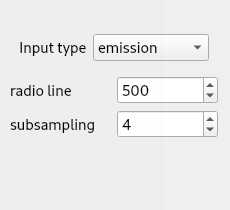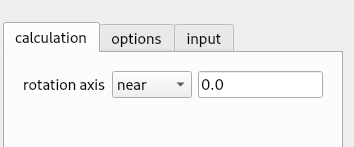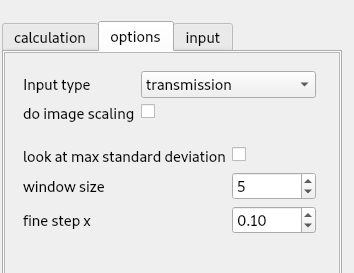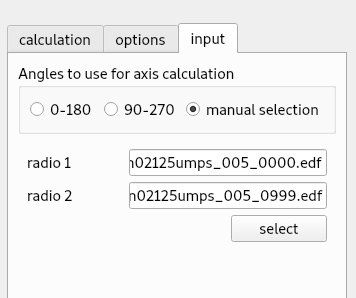center of rotation finder#

Behavior#
This widget is used to compute the center of rotation of a set of acquisition.
For this you can choose to use projections or to generate a sinogram from them to compute it.
The axis widget behave as a pop up if it require some information to process. This will be the case until you ‘lock’ the axis with a fix value.
Note
tomwer is displaying the value of the cor in \([- \frac{framewidth}{2}, \frac{framewidth}{2}]\). But nabu is taking cor value in \([0, framewidth]\). Internally this is correctly managed but if you want to take this value and pass it to nabu or pyshst (or if you look to output files generated by tomwer) you should add \(\frac{framewidth}{2}\) to this value.
Center of rotation from radio#
The interface for computing center of rotation from axis is the following:
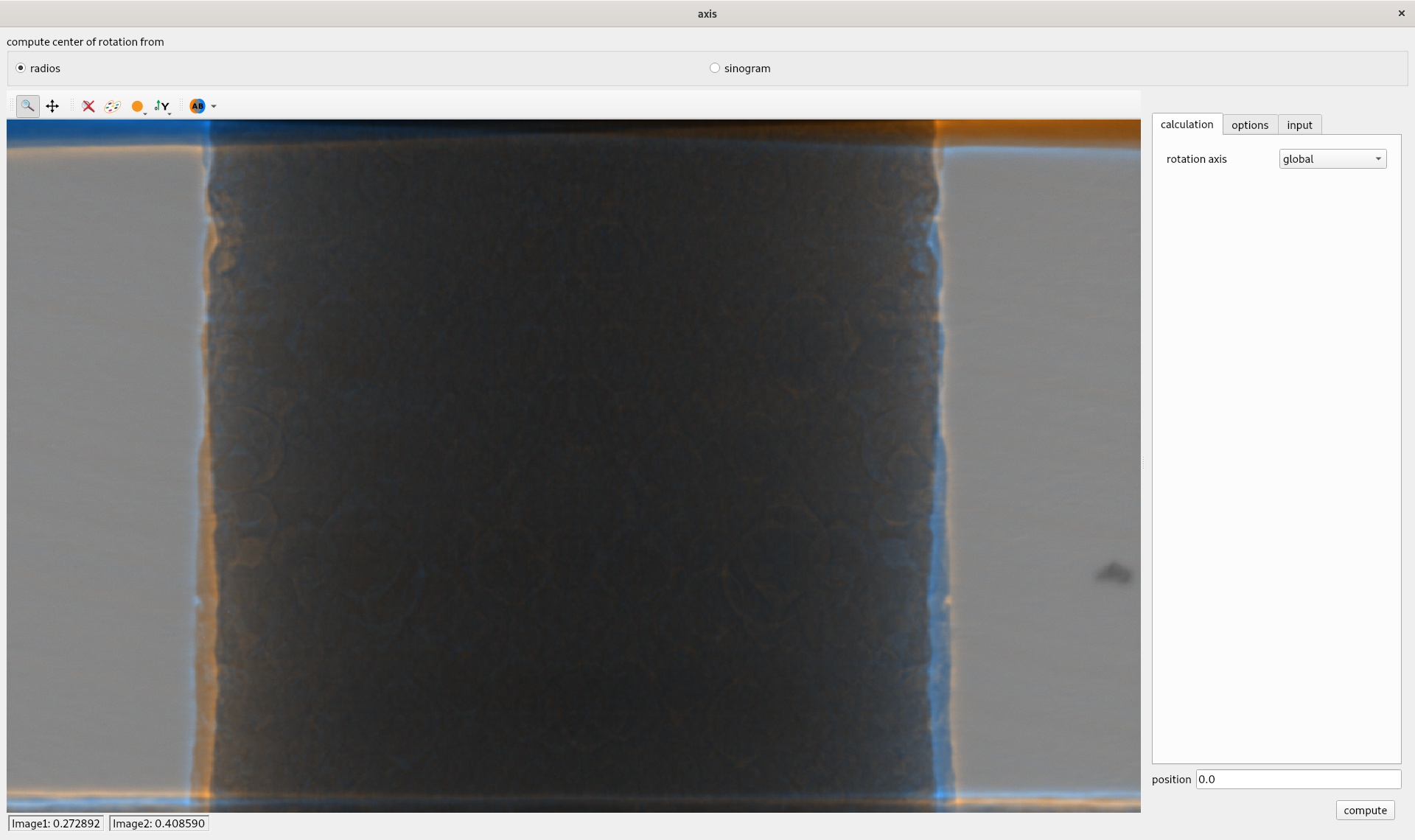
The options to center of rotation calculation is divided in three parts:
calculation which should be used to define the algorithm to use and some mandatory parameters (like near position) for the near algorithm
you can find a short description of the algorithm in Algorithms
options, used to define some ‘advance’ control for the algorithm. The available options are dependant of the selected algorithm.
input, used to define the projection to use for the center of rotation calculation. ‘0-180’ and ‘90-270’ angle mode will try to deduce the closest projection to 0 and 180 degrees or 90 and 270 degrees and select those for calculation. The third option allows you to pick manually the projections to use.
Center of rotation from sinogram#
The interface for computing center of rotation from sinograms is the following:
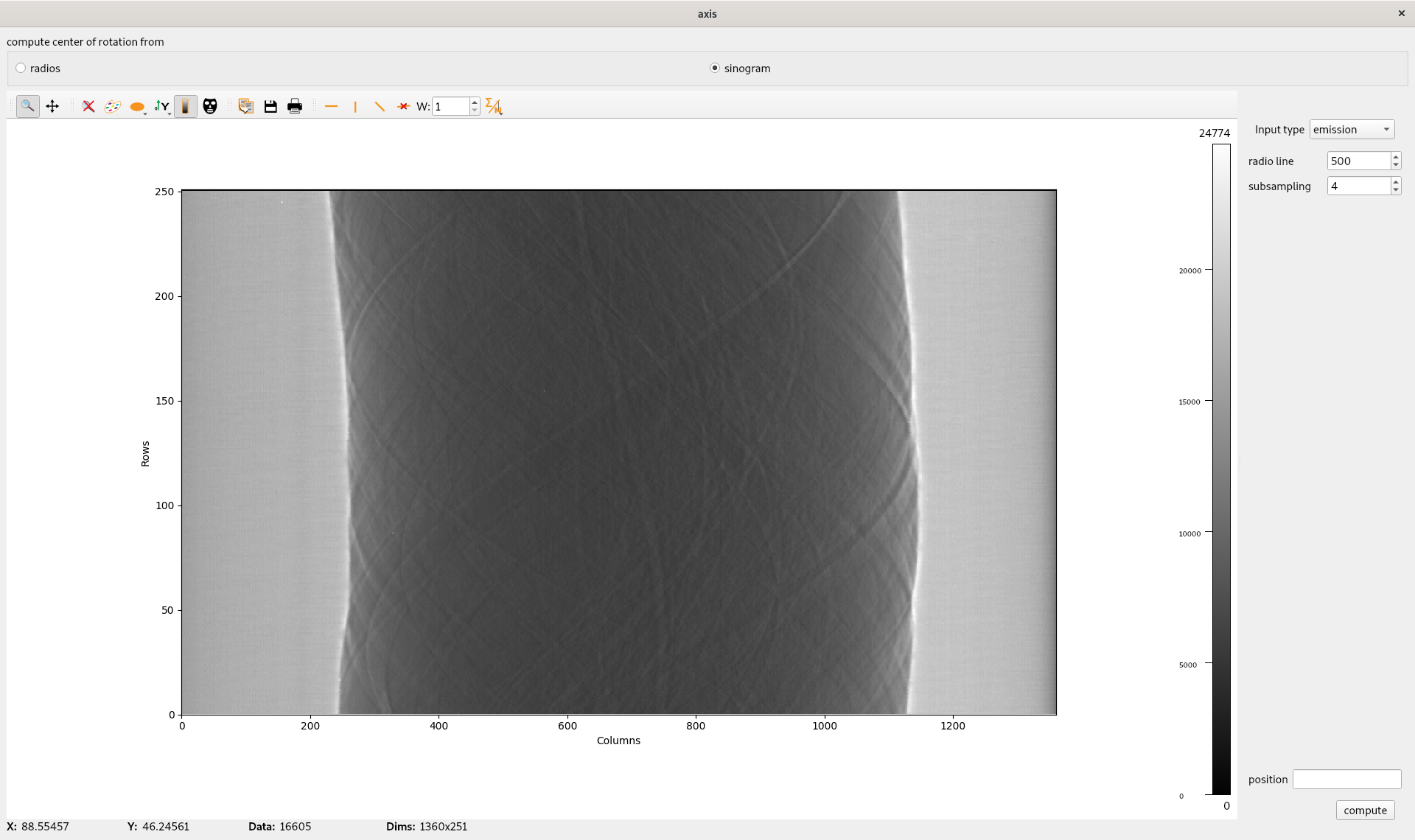
For sinogram you should first select the type of sinogram (emission or transmission). Because the algorithm requires to compute log values in the case of transmission. Then you can pick a radio line and when you select ‘compute’ it will: * extract the sinogram for the selected line * compute center of rotation for this line
You can also select the subsampling value. As dataset can be huge, we can take only one each ‘subsampling’
